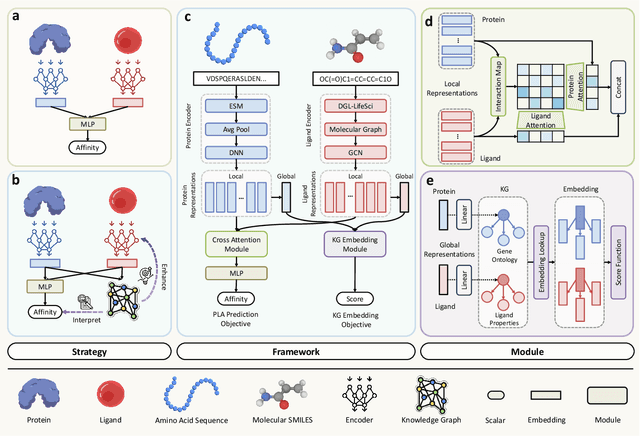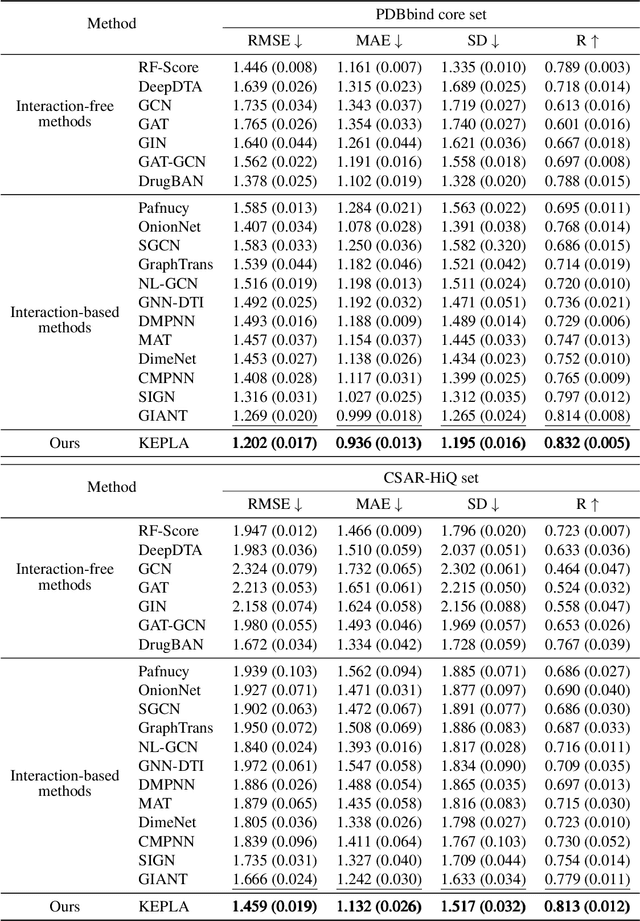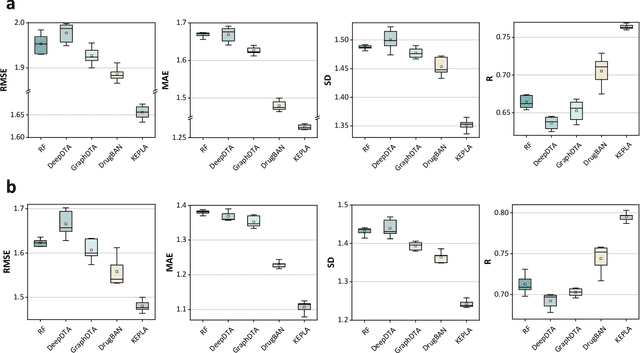Liqiang Nie
A Polynomial-time Algorithm for Online Sparse Linear Regression with Improved Regret Bound under Weaker Conditions
Oct 31, 2025Abstract:In this paper, we study the problem of online sparse linear regression (OSLR) where the algorithms are restricted to accessing only $k$ out of $d$ attributes per instance for prediction, which was proved to be NP-hard. Previous work gave polynomial-time algorithms assuming the data matrix satisfies the linear independence of features, the compatibility condition, or the restricted isometry property. We introduce a new polynomial-time algorithm, which significantly improves previous regret bounds (Ito et al., 2017) under the compatibility condition that is weaker than the other two assumptions. The improvements benefit from a tighter convergence rate of the $\ell_1$-norm error of our estimators. Our algorithm leverages the well-studied Dantzig Selector, but importantly with several novel techniques, including an algorithm-dependent sampling scheme for estimating the covariance matrix, an adaptive parameter tuning scheme, and a batching online Newton step with careful initializations. We also give novel and non-trivial analyses, including an induction method for analyzing the $\ell_1$-norm error, careful analyses on the covariance of non-independent random variables, and a decomposition on the regret. We further extend our algorithm to OSLR with additional observations where the algorithms can observe additional $k_0$ attributes after each prediction, and improve previous regret bounds (Kale et al., 2017; Ito et al., 2017).
Open Multimodal Retrieval-Augmented Factual Image Generation
Oct 26, 2025Abstract:Large Multimodal Models (LMMs) have achieved remarkable progress in generating photorealistic and prompt-aligned images, but they often produce outputs that contradict verifiable knowledge, especially when prompts involve fine-grained attributes or time-sensitive events. Conventional retrieval-augmented approaches attempt to address this issue by introducing external information, yet they are fundamentally incapable of grounding generation in accurate and evolving knowledge due to their reliance on static sources and shallow evidence integration. To bridge this gap, we introduce ORIG, an agentic open multimodal retrieval-augmented framework for Factual Image Generation (FIG), a new task that requires both visual realism and factual grounding. ORIG iteratively retrieves and filters multimodal evidence from the web and incrementally integrates the refined knowledge into enriched prompts to guide generation. To support systematic evaluation, we build FIG-Eval, a benchmark spanning ten categories across perceptual, compositional, and temporal dimensions. Experiments demonstrate that ORIG substantially improves factual consistency and overall image quality over strong baselines, highlighting the potential of open multimodal retrieval for factual image generation.
Reasoning in the Dark: Interleaved Vision-Text Reasoning in Latent Space
Oct 14, 2025



Abstract:Multimodal reasoning aims to enhance the capabilities of MLLMs by incorporating intermediate reasoning steps before reaching the final answer. It has evolved from text-only reasoning to the integration of visual information, enabling the thought process to be conveyed through both images and text. Despite its effectiveness, current multimodal reasoning methods depend on explicit reasoning steps that require labor-intensive vision-text annotations and inherently introduce significant inference latency. To address these issues, we introduce multimodal latent reasoning with the advantages of multimodal representation, reduced annotation, and inference efficiency. To facilicate it, we propose Interleaved Vision-Text Latent Reasoning (IVT-LR), which injects both visual and textual information in the reasoning process within the latent space. Specifically, IVT-LR represents each reasoning step by combining two implicit parts: latent text (the hidden states from the previous step) and latent vision (a set of selected image embeddings). We further introduce a progressive multi-stage training strategy to enable MLLMs to perform the above multimodal latent reasoning steps. Experiments on M3CoT and ScienceQA demonstrate that our IVT-LR method achieves an average performance increase of 5.45% in accuracy, while simultaneously achieving a speed increase of over 5 times compared to existing approaches. Code available at https://github.com/FYYDCC/IVT-LR.
Parallel Test-Time Scaling for Latent Reasoning Models
Oct 09, 2025Abstract:Parallel test-time scaling (TTS) is a pivotal approach for enhancing large language models (LLMs), typically by sampling multiple token-based chains-of-thought in parallel and aggregating outcomes through voting or search. Recent advances in latent reasoning, where intermediate reasoning unfolds in continuous vector spaces, offer a more efficient alternative to explicit Chain-of-Thought, yet whether such latent models can similarly benefit from parallel TTS remains open, mainly due to the absence of sampling mechanisms in continuous space, and the lack of probabilistic signals for advanced trajectory aggregation. \ This work enables parallel TTS for latent reasoning models by addressing the above issues. For sampling, we introduce two uncertainty-inspired stochastic strategies: Monte Carlo Dropout and Additive Gaussian Noise. For aggregation, we design a Latent Reward Model (LatentRM) trained with step-wise contrastive objective to score and guide latent reasoning. Extensive experiments and visualization analyses show that both sampling strategies scale effectively with compute and exhibit distinct exploration dynamics, while LatentRM enables effective trajectory selection. Together, our explorations open a new direction for scalable inference in continuous spaces. Code released at https://github.com/YRYangang/LatentTTS.
TTOM: Test-Time Optimization and Memorization for Compositional Video Generation
Oct 09, 2025Abstract:Video Foundation Models (VFMs) exhibit remarkable visual generation performance, but struggle in compositional scenarios (e.g., motion, numeracy, and spatial relation). In this work, we introduce Test-Time Optimization and Memorization (TTOM), a training-free framework that aligns VFM outputs with spatiotemporal layouts during inference for better text-image alignment. Rather than direct intervention to latents or attention per-sample in existing work, we integrate and optimize new parameters guided by a general layout-attention objective. Furthermore, we formulate video generation within a streaming setting, and maintain historical optimization contexts with a parametric memory mechanism that supports flexible operations, such as insert, read, update, and delete. Notably, we found that TTOM disentangles compositional world knowledge, showing powerful transferability and generalization. Experimental results on the T2V-CompBench and Vbench benchmarks establish TTOM as an effective, practical, scalable, and efficient framework to achieve cross-modal alignment for compositional video generation on the fly.
IntentionVLA: Generalizable and Efficient Embodied Intention Reasoning for Human-Robot Interaction
Oct 09, 2025Abstract:Vision-Language-Action (VLA) models leverage pretrained vision-language models (VLMs) to couple perception with robotic control, offering a promising path toward general-purpose embodied intelligence. However, current SOTA VLAs are primarily pretrained on multimodal tasks with limited relevance to embodied scenarios, and then finetuned to map explicit instructions to actions. Consequently, due to the lack of reasoning-intensive pretraining and reasoning-guided manipulation, these models are unable to perform implicit human intention reasoning required for complex, real-world interactions. To overcome these limitations, we propose \textbf{IntentionVLA}, a VLA framework with a curriculum training paradigm and an efficient inference mechanism. Our proposed method first leverages carefully designed reasoning data that combine intention inference, spatial grounding, and compact embodied reasoning, endowing the model with both reasoning and perception capabilities. In the following finetuning stage, IntentionVLA employs the compact reasoning outputs as contextual guidance for action generation, enabling fast inference under indirect instructions. Experimental results show that IntentionVLA substantially outperforms $\pi_0$, achieving 18\% higher success rates with direct instructions and 28\% higher than ECoT under intention instructions. On out-of-distribution intention tasks, IntentionVLA achieves over twice the success rate of all baselines, and further enables zero-shot human-robot interaction with 40\% success rate. These results highlight IntentionVLA as a promising paradigm for next-generation human-robot interaction (HRI) systems.
Dual Knowledge-Enhanced Two-Stage Reasoner for Multimodal Dialog Systems
Sep 09, 2025



Abstract:Textual response generation is pivotal for multimodal \mbox{task-oriented} dialog systems, which aims to generate proper textual responses based on the multimodal context. While existing efforts have demonstrated remarkable progress, there still exist the following limitations: 1) \textit{neglect of unstructured review knowledge} and 2) \textit{underutilization of large language models (LLMs)}. Inspired by this, we aim to fully utilize dual knowledge (\textit{i.e., } structured attribute and unstructured review knowledge) with LLMs to promote textual response generation in multimodal task-oriented dialog systems. However, this task is non-trivial due to two key challenges: 1) \textit{dynamic knowledge type selection} and 2) \textit{intention-response decoupling}. To address these challenges, we propose a novel dual knowledge-enhanced two-stage reasoner by adapting LLMs for multimodal dialog systems (named DK2R). To be specific, DK2R first extracts both structured attribute and unstructured review knowledge from external knowledge base given the dialog context. Thereafter, DK2R uses an LLM to evaluate each knowledge type's utility by analyzing LLM-generated provisional probe responses. Moreover, DK2R separately summarizes the intention-oriented key clues via dedicated reasoning, which are further used as auxiliary signals to enhance LLM-based textual response generation. Extensive experiments conducted on a public dataset verify the superiority of DK2R. We have released the codes and parameters.
CogVLA: Cognition-Aligned Vision-Language-Action Model via Instruction-Driven Routing & Sparsification
Aug 28, 2025



Abstract:Recent Vision-Language-Action (VLA) models built on pre-trained Vision-Language Models (VLMs) require extensive post-training, resulting in high computational overhead that limits scalability and deployment.We propose CogVLA, a Cognition-Aligned Vision-Language-Action framework that leverages instruction-driven routing and sparsification to improve both efficiency and performance. CogVLA draws inspiration from human multimodal coordination and introduces a 3-stage progressive architecture. 1) Encoder-FiLM based Aggregation Routing (EFA-Routing) injects instruction information into the vision encoder to selectively aggregate and compress dual-stream visual tokens, forming a instruction-aware latent representation. 2) Building upon this compact visual encoding, LLM-FiLM based Pruning Routing (LFP-Routing) introduces action intent into the language model by pruning instruction-irrelevant visually grounded tokens, thereby achieving token-level sparsity. 3) To ensure that compressed perception inputs can still support accurate and coherent action generation, we introduce V-L-A Coupled Attention (CAtten), which combines causal vision-language attention with bidirectional action parallel decoding. Extensive experiments on the LIBERO benchmark and real-world robotic tasks demonstrate that CogVLA achieves state-of-the-art performance with success rates of 97.4% and 70.0%, respectively, while reducing training costs by 2.5-fold and decreasing inference latency by 2.8-fold compared to OpenVLA. CogVLA is open-sourced and publicly available at https://github.com/JiuTian-VL/CogVLA.
Fair Deepfake Detectors Can Generalize
Jul 03, 2025Abstract:Deepfake detection models face two critical challenges: generalization to unseen manipulations and demographic fairness among population groups. However, existing approaches often demonstrate that these two objectives are inherently conflicting, revealing a trade-off between them. In this paper, we, for the first time, uncover and formally define a causal relationship between fairness and generalization. Building on the back-door adjustment, we show that controlling for confounders (data distribution and model capacity) enables improved generalization via fairness interventions. Motivated by this insight, we propose Demographic Attribute-insensitive Intervention Detection (DAID), a plug-and-play framework composed of: i) Demographic-aware data rebalancing, which employs inverse-propensity weighting and subgroup-wise feature normalization to neutralize distributional biases; and ii) Demographic-agnostic feature aggregation, which uses a novel alignment loss to suppress sensitive-attribute signals. Across three cross-domain benchmarks, DAID consistently achieves superior performance in both fairness and generalization compared to several state-of-the-art detectors, validating both its theoretical foundation and practical effectiveness.
KEPLA: A Knowledge-Enhanced Deep Learning Framework for Accurate Protein-Ligand Binding Affinity Prediction
Jun 16, 2025



Abstract:Accurate prediction of protein-ligand binding affinity is critical for drug discovery. While recent deep learning approaches have demonstrated promising results, they often rely solely on structural features, overlooking valuable biochemical knowledge associated with binding affinity. To address this limitation, we propose KEPLA, a novel deep learning framework that explicitly integrates prior knowledge from Gene Ontology and ligand properties of proteins and ligands to enhance prediction performance. KEPLA takes protein sequences and ligand molecular graphs as input and optimizes two complementary objectives: (1) aligning global representations with knowledge graph relations to capture domain-specific biochemical insights, and (2) leveraging cross attention between local representations to construct fine-grained joint embeddings for prediction. Experiments on two benchmark datasets across both in-domain and cross-domain scenarios demonstrate that KEPLA consistently outperforms state-of-the-art baselines. Furthermore, interpretability analyses based on knowledge graph relations and cross attention maps provide valuable insights into the underlying predictive mechanisms.
 Add to Chrome
Add to Chrome Add to Firefox
Add to Firefox Add to Edge
Add to Edge